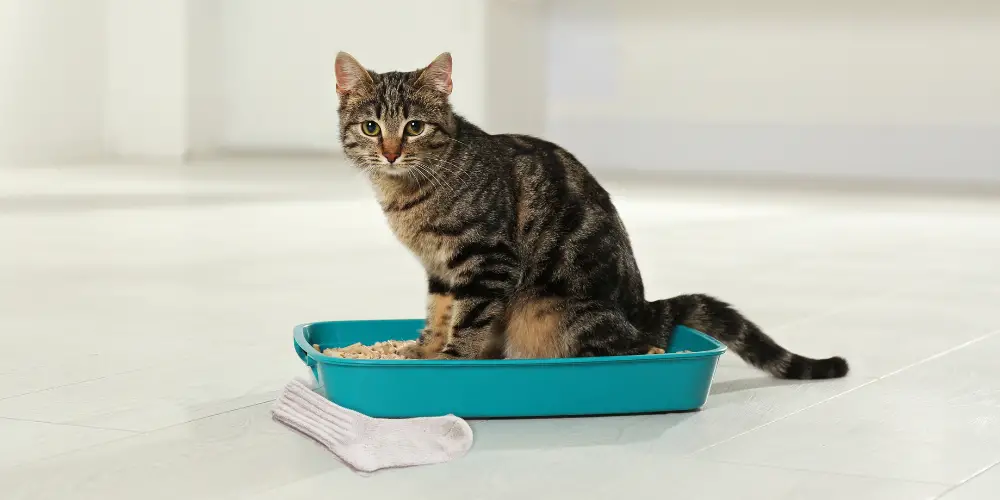Have you ever caught your feline friend dragging toys, clothes, or socks into their litter box? You’re not alone if you’re scratching your head about this peculiar behavior. Why do cats drag things into their litter boxes?
Cats drag items into their litter boxes due to instinctual behaviors. In the wild, they bury food remnants to hide them from predators and competitors. Transferred to a domestic setting, this behavior can manifest as dragging objects to their litter box, a place they associate with burying and hiding.
Stick around, and we’ll explore the fascinating reasons behind this quirky feline trait!
Key Takeaways
- Cats drag items into their litter boxes primarily due to instinctual behaviors related to scent masking and territorial marking.
- The behavior is more common in multi-cat households where territorial disputes are frequent.
- As a coping mechanism, stress or anxiety can also trigger cats to drag items into their litter boxes.
- Some cats may engage in this behavior as a form of play or to seek attention.
- Similar to a child’s security blanket, soft items like clothing may be dragged into the litter box for comfort.
- Scientific research on this specific feline behavior is limited but suggests links to cognitive functions and stress hormones.
- Anecdotal evidence from cat owners provides valuable insights into the various reasons behind this behavior.
- Veterinarians recommend observing your cat’s overall behavior and consulting a professional if the habit persists.
- Animal behaviorists often link this action to a cat’s wild instincts, such as dragging prey to a safe location.
- Managing this behavior involves identifying triggers, creating a safe space, and possibly consulting a veterinarian for a thorough check-up.
Common Reasons Behind the Behavior
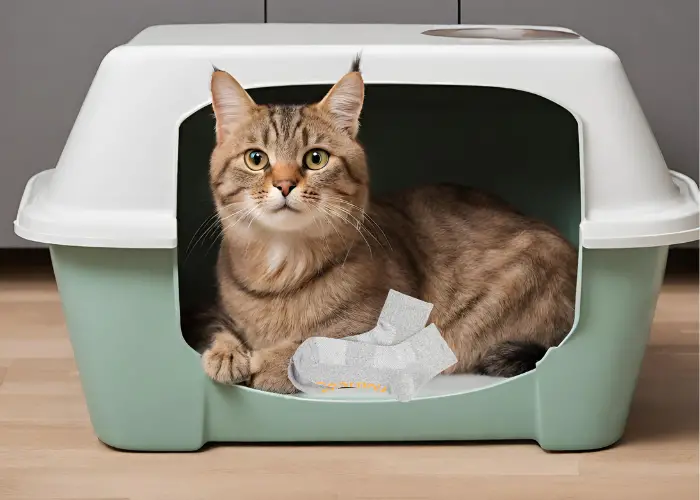
Cats are mysterious creatures, and their actions often leave us scratching our heads.
Several factors could be at play when dragging items into their litter boxes. Here are some of the most common reasons:
Territorial Instincts
Cats are territorial animals by nature. Dragging objects into their litter boxes could be a way for them to mark their territory.
This is especially true for multi-cat households where territory disputes are common.
Imagine your cat staking their claim on the litter box territory with their cherished possessions.
Stress or Anxiety
Just like humans, cats can experience stress and anxiety. Placing objects in their litter boxes might offer them security and control over their environment.
Picture your cat seeking comfort in the familiar scent of their toys when the world feels overwhelming.
Playfulness
Believe it or not, some cats find joy in dragging things around. It could be a form of play or even a way to get your attention.
Envision your mischievous feline gleefully dragging a toy into the litter box, turning it into an exciting adventure.
Need for Comfort
Some cats may drag soft items like clothing into their litter boxes as a source of comfort, similar to how a child might have a security blanket.
Imagine your cat finding solace in their favorite blanket’s familiar scent and texture.
Scientific Explanations
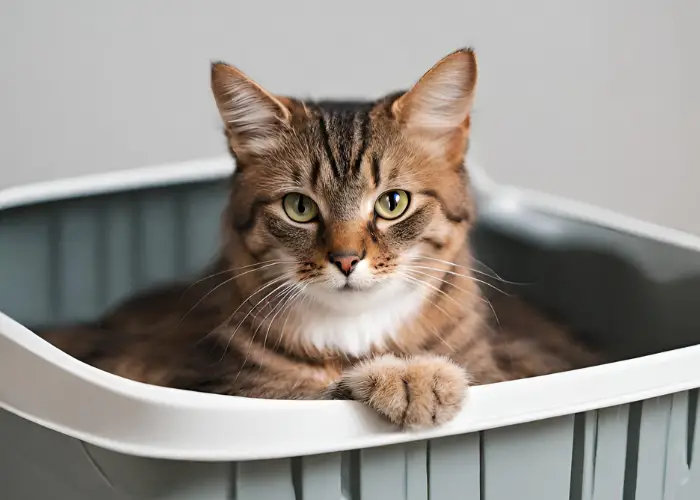
While there’s a lot of anecdotal evidence about why cats drag items into their litter boxes, scientific research on this specific behavior is somewhat limited. However, some theories could shed light on this quirky feline habit:
Feline Cognitive Behavior
Some animal behaviorists suggest this action could be linked to a cat’s cognitive functions.
Cats are known for their problem-solving abilities, and dragging items could be a complex form of play or a coping mechanism.
Imagine your cat as a mini explorer, navigating its environment and seeking new challenges.
Instinctual Behavior
Cats are solitary hunters. Dragging items into a confined space like a litter box could mimic their instinct to bring prey back to a safe location.
Consider your indoor cat displaying remnants of ancestral hunting behavior.
Stress Hormones
Research has shown that cats release specific hormones when stressed.
These hormones could influence various behaviors, including dragging items into their litter boxes.
For those interested in the science behind feline behavior, you might want to explore the truth behind cats hissing and purring when they encounter snakes.
Stress can manifest peculiarly for cats, and dragging items into the litter box could be a coping mechanism.
Anecdotal Evidence
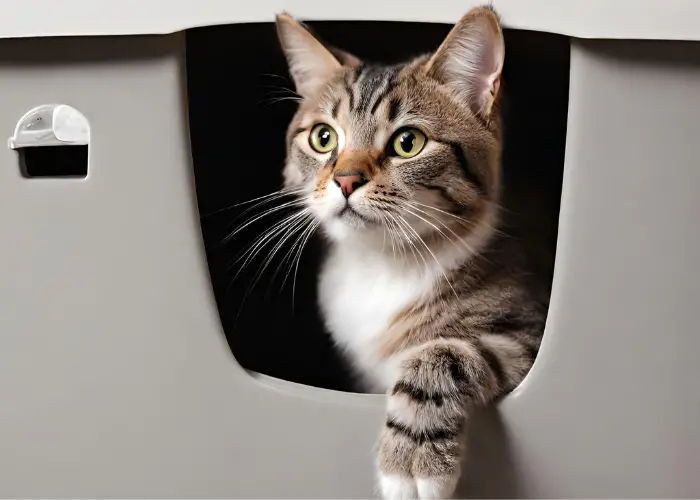
Sometimes, the best insights come from the experiences of fellow cat owners.
While these stories may not be backed by scientific research, they offer valuable perspectives on why cats might drag items into their litter boxes:
The Case of the Missing Sock
One cat owner shared a story about how their cat would consistently drag a specific sock into the litter box. The sock had the owner’s scent, and the cat found comfort.
Imagine the scene: Your favorite sock mysteriously relocated to the litter box, providing comfort for your cat.
The Toy Collector
Another cat owner found various small toys in the litter box. Upon observing their cat, they realized it was a form of play.
The cat would “hunt” the toys and bring them to the litter box as if it were its “lair.”
Think of your cat as an expert hunter, proudly displaying its “catch” in its chosen domain.
The Comfort Seeker
One cat dragged a small blanket into the litter box in a multi-cat household.
The owner speculated that this was the cat’s way of creating a safe space amidst the chaos of living with multiple felines.
Imagine providing your cat with a serene retreat amid a bustling household.
For more fascinating stories about cat behavior, check out why some cats enjoy getting spanked.
Expert Opinions
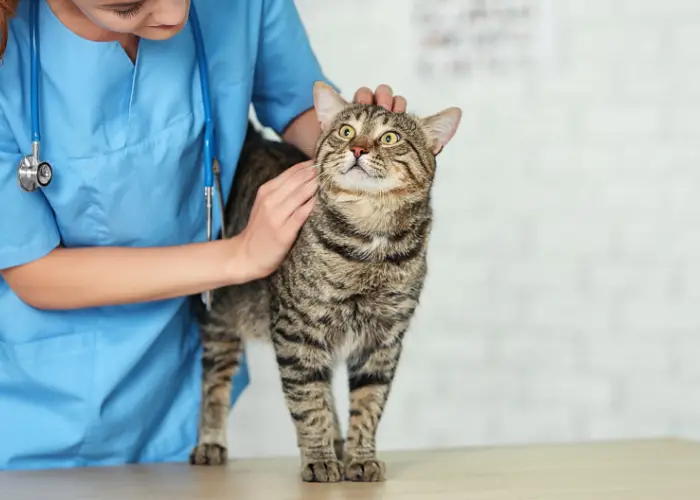
Understanding feline behavior can be complex; sometimes, it’s best to consult the experts.
Here’s what veterinarians and animal behaviorists have to say about cats dragging items into their litter boxes:
Veterinary Perspective
From a medical standpoint, experts often recommend observing your cat’s overall behavior.
If the habit of dragging items into the litter box persists, it could be a sign of underlying stress or anxiety, warranting a visit to the vet.
Imagine yourself as the detective of your cat’s well-being, observing and assessing their behavior.
Animal Behaviorist Perspective
Behaviorists often link this peculiar habit to a cat’s instincts. In the wild, cats drag their prey to safe locations, and this behavior could be a domesticated manifestation of that instinct.
Picture your cat as a tiny wildcat, tapping into its ancestral skills.
General Cat Care Advice
Experts in feline care suggest this behavior might be a form of communication.
Your cat might be trying to tell you something, be it a need for attention or a sign of discomfort.
Imagine deciphering your cat’s secret code, strengthening your bond through understanding.
For those keen to delve deeper into the intricacies of feline behavior, you might find it interesting to learn what a group of cats is called.
How to Manage This Behavior
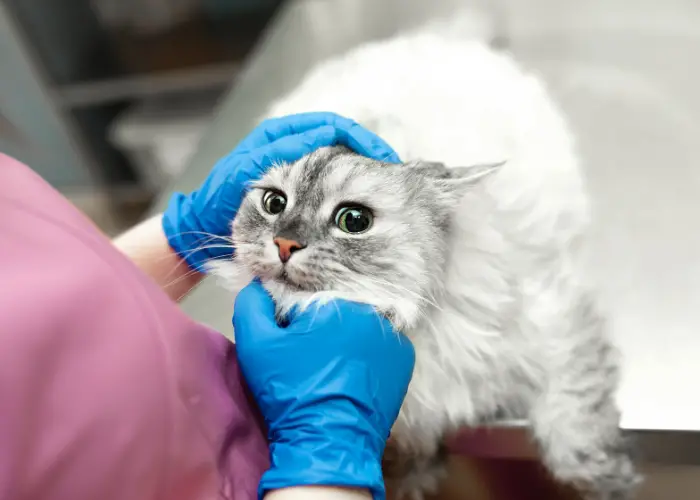
If your cat has dragged items into their litter box, you might wonder how to manage or curb this behavior. Here are some expert-approved tips:
Observe and Identify Triggers
Before taking action, observe your cat to identify any triggers causing this behavior.
Is it happening more frequently when there are guests? Or perhaps when you’re not at home?
Imagine yourself as a detective, uncovering the clues that trigger this puzzling behavior.
Create a Safe Space
If stress or anxiety is the culprit, consider creating a safe space for your cat away from the litter box. This could be a cozy corner with their favorite blanket and toys.
Envision a serene oasis in your home where your cat can retreat when the world becomes overwhelming.
Consult a Veterinarian
If the behavior persists or worsens, it’s advisable to consult a veterinarian for a thorough check-up. There could be underlying health issues that need to be addressed.
Imagine your vet as your cat’s healthcare detective, conducting a thorough examination.
Use Positive Reinforcement
Reward your cat when they exhibit good behavior. Positive reinforcement can go a long way in changing a cat’s habits.
Picture yourself as a cat trainer, using praise and treats to encourage the desired behavior.
For more tips on managing quirky feline behaviors, you might find it helpful to read about why cats fight at night and how to control it.
Conclusion
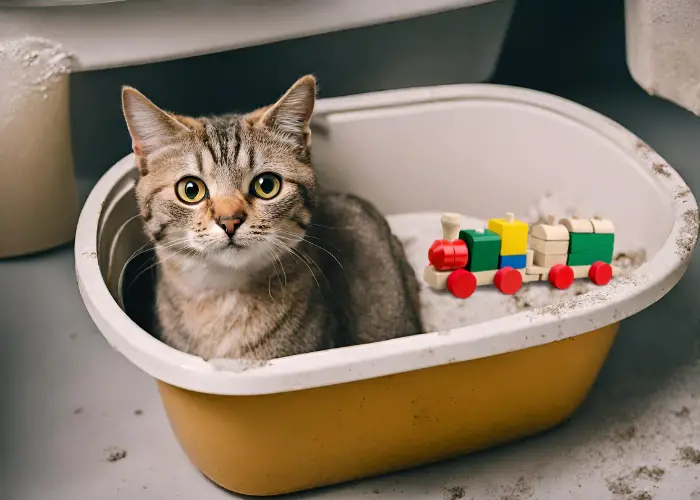
Cats are enigmatic creatures, and their behavior can often leave us puzzled.
Dragging items into their litter boxes is one such behavior that has both cat owners and experts scratching their heads.
While there may not be a one-size-fits-all answer, understanding the possible reasons and consulting experts can offer valuable insights.
Whether it’s territorial instincts, stress, or simply a quirky habit, each cat is unique, and so is their behavior.
For those interested in exploring the fascinating world of feline behavior, you might enjoy learning about the intriguing dance between cats and rats in nature.
To explore deeper into cat behavior and care, don’t forget to visit resources like
FAQs
- Why do cats bury their waste?
- Cats bury their waste to mask their scent from predators. This instinctual behavior has been passed down from their wild ancestors.
- Is this behavior a sign of stress?
- While not definitive, dragging items into the litter box could signify stress or anxiety. If you notice other signs like excessive grooming or hiding, it’s best to consult a veterinarian.
- How can I stop my cat from dragging items into the litter box?
- The first step is to identify any triggers causing this behavior. Once identified, you can eliminate them or consult a veterinarian for further advice.
- Is this behavior common in certain breeds?
- There is no evidence to suggest that this behavior is more common in certain cat breeds.
- Could this be a medical issue?
- While it’s less likely, a medical issue cannot be ruled out. If the behavior persists, a visit to the vet is advisable.
For more answers to your burning questions about cats, you might be interested in why cats eat flies and whether it’s a cause for concern.
References:
- ScienceDirect. (n.d.). The ins and outs of the litter box: A detailed ethogram of cat elimination behavior in two contrasting environments. https://www.sciencedirect.com/science/article/pii/S016815911730151X
- CatForum. (2007, March 12). Does your cat ever drag things into the litter box? CatForum. https://www.catforum.com/threads/does-your-cat-ever-drag-things-into-the-litter-box.77089/
- The Ohio State University, Indoor Pet Initiative. (n.d.). Litter boxes. https://indoorpet.osu.edu/cats/basicneeds/litter-boxes
